Shinobazu-no-ike Bentendo is a Buddhist temple dedicated to the goddess Benzaiten. The temple stands on an island in the middle of Shinobazu Pond which is located in the southern part of Ueno Park.
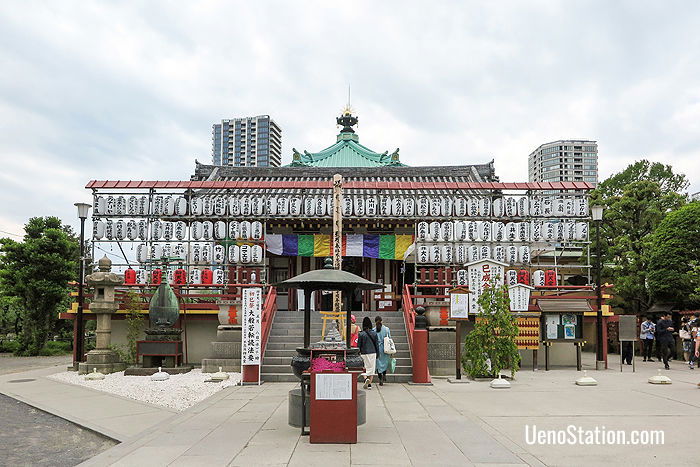
The front entrance to Shinobazu-no-ike Bentendo
The History of Shinobazu-no-ike Bentendo
Originally the Bentendo Temple was part of the larger Kaneiji Temple complex which once covered the entire area now occupied by Ueno Park. Kaneiji Temple was built in 1625 by the Buddhist monk Tenkai. He modelled Kaneiji Temple after Enryakuji, a major Buddhist temple located on Mount Hiei near Kyoto. Some years later Tenkai had an island constructed in the middle of Shinobazu Pond. Tenkai built the Bentendo Temple on the island and enshrined a statue of the goddess Benzaiten there. The island, called Bentenjima, was designed to imitate the island of Chikubushima which stands in Lake Biwa on the eastern side of Mount Hiei. The Bentendo was also built as a copy of a temple on Chikubushima.
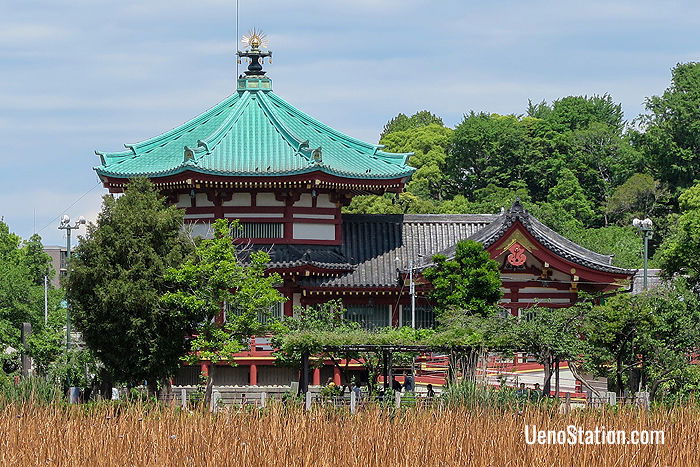
Bentendo viewed from across the lotus pond
Lotus plants, which are a Buddhist symbol of purity, were planted in Shinobazu Pond and still cover its southern part. Buddhist ceremonies of compassion were also held at the pond, in which water birds, turtles, and fish were set free, and the pond was then known as the “Pond of Release”. Today there are stone monuments to these three animals on the Bentendo grounds. Originally the island could only be reached by boat, but a bridge was added on its eastern side in 1672, so that people could walk to the temple.
These days Bentenjima can be reached by walkways on its east and west sides. Sadly, the original Bentendo Temple was destroyed in a bombing raid in World War 2. However, the statue of Benzaiten survived the bombing and is now enshrined in the new Main Hall of the temple. This building is a reconstruction of the 17th century Main Hall and it was built in 1958.
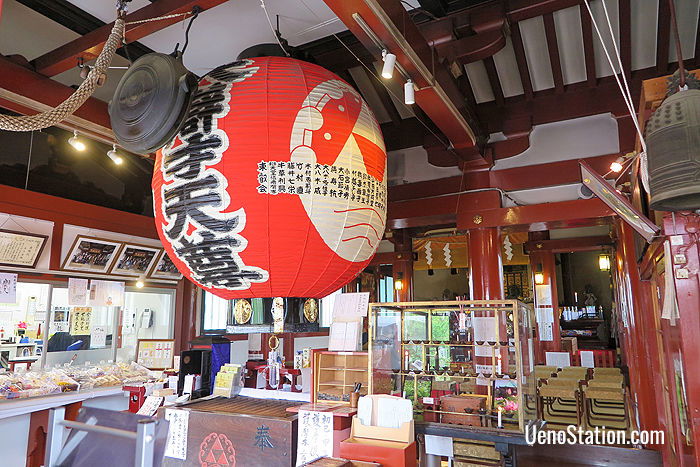
Inside the entrance to the Main Hall
About Benzaiten
Benzaiten (also called Benten) is the only female member of Japan’s seven lucky gods. Originally she was an Indian river goddess, and so in Japan she is still associated with water and her temples are usually built near water too. Together with water, Benzaiten is a goddess of all things that flow which includes words, wisdom, wealth, music and dance. Very often she is shown holding a kind of lute called a biwa and you will see a large sculpture of a biwa outside the Main Hall.
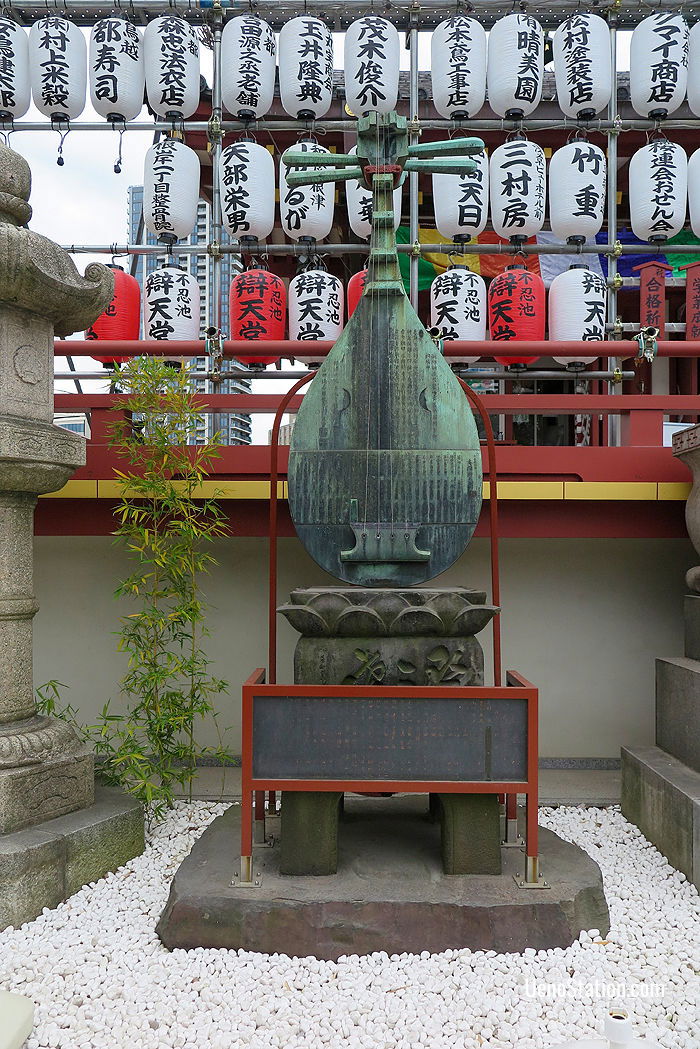
The biwa sculpture
Another statue you will see outside the Main Hall is of a coiled serpent with a bearded man’s head. This is Ugaijin, a Japanese folk god of harvests, fertility, and wealth. Benzaiten is often shown with snakes, and so Ugaijin, with his snake-like body, has also become associated with her.
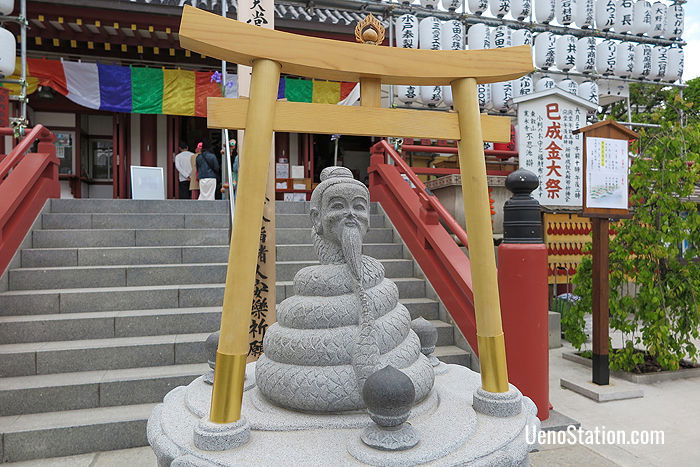
The statue of Ugaijin
The statue of Benzaiten inside the Main Hall is called Happi-Benzaiten which literally means “Eight Elbows Benzaiten”. This is because she has eight arms which hold different weapons for fighting off evil. Tenkai had this statue transferred from the temple of Hongonji on Chikubushima when Bentendo was founded. Because of Benzaiten’s association with music and good fortune, musicians, and entertainers pray to this statue for success in their arts, and other people pray to her for success in their business.
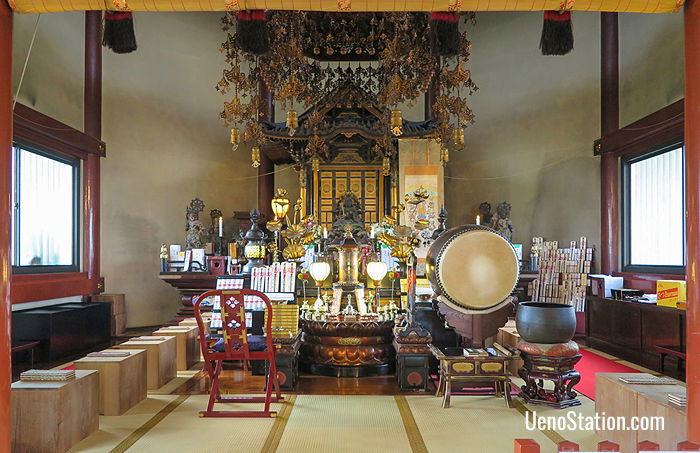
The altar inside the Main Hall
On the ceiling of the Main Hall is a dynamic image of a dragon which was painted by the artist Kibo Kodama in 1966. Dragons in Japan are water spirits, and so they are also often shown with Benzaiten.
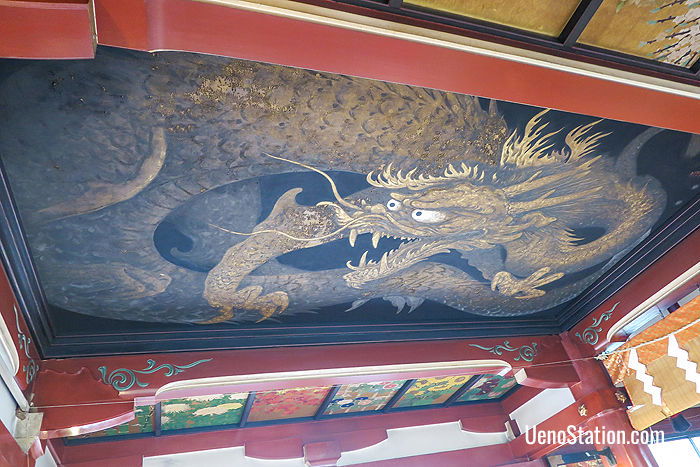
Kibo Kodama’s dragon painting
As well as having eight arms, the statue of Benzaiten is housed in an eight-sided building. If you view the temple tower from its western approach, you can clearly see this striking octagonal structure.
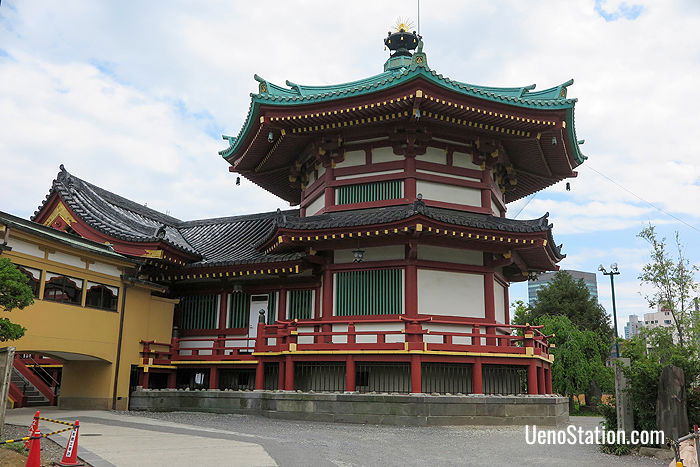
The octagonal tower of Bentendo
Location
Shinobazu-no-ike Bentendo is located in the southern part of Ueno Park. It is a 6 minute walk from the Park Exit of JR Ueno Station, 3 minutes from Keisei Ueno Station, and 5 minutes from Ueno Subway Station on the Tokyo Metro Ginza and Hibiya lines. Here is a map showing its location.
Opening Hours: 9.00 – 17.00
Article and original photos by Michael Lambe. All rights reserved.
